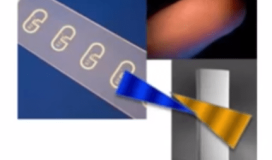Near Field Communication (NFC) is a short-range of wireless communication protocol which is designed to provide intuitive communication link between two devices one of them being passive and the other one being an active communication device. NFC facilitates data exchange, pairing, establishing wireless connections and simplified transactions between two communication devices particularly an NFC tag sticker and an embedded reading device when brought in close proximity range of around 10 cm or less. The data privacy in NFC tag sticker is more inherent and bounded as compared to other wireless forms because the communication is usually one-to-one and requires close proximity that eradicates the chances of data breach and data loss. NFC has three communication modes which are namely Read/Write, Peer-to-Peer and Card Emulation.
Most of the embedded applications used these days utilize NFC in the Read/Write mode for the establishment and maintenance of communication link. In such cases the NFC tag stickers which may be used as a key fob, wristband, or other object form the embedded system and are mobile devices feeding the data on request to the active reader. An NFC tag functionally connected with a reader is an embedded system that behaves on the similar lines of a dual port memory. Among the dual ports one of them is accessed wirelessly via NFC interface and the other port is accessed by the embedded system through an I2 C interface. Thus, through this wireless functionality, data can be transferred from an external source for instance, an NFC-enabled mobile device to the embedded system ready to receive the data. Furthermore, as the NFC tags are passive; they can be easily written or read from an external source even if the embedded system is turned off or is not operating on power.
Some of the greatest benefits of embedding an NFC connected tag chip in the electronic products and devices are that it provides administrative access to electronic devices and facilitates controlled access. The users having an NFC-enabled mobile device and NFC tag sticker can initiate communication through NFC interface and proffer self-serve maintenance. When the embedded system incorporates an NFC tag, the system controller can effectively utilize the nonvolatile internal memory of the tag to store data and information like serial and model numbers, error codes and warranty information. The other thing is that power in the electronic device is not necessary to retrieve data from the tag memory through an NFC enabled mobile device. Thus, NFC with unique embedded design is certainly going to be the most utilized wireless technology in the coming days.



